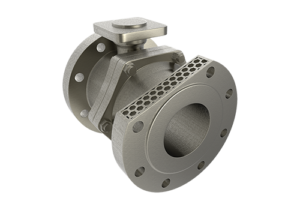Traditionally, 3D design has not had to worry about real-world constraints like gravity. However, this must be taken into account when designing 3D models for printing, as the FDM printer cannot override the laws of physics and fluidize printings in the air. The printer has 3 axes, as in the real world, XY and Z, of which the Z axis is the layer thickness. The printer tries to produce a copy of the 3D model, either top-down or bottom-up, depending on the type of printer. The use of the 3d printing plastic powder comes perfect here.
In the X and Y directions, the shapes of the piece are practically limited by the properties of the nozzle, that is, how effective the cooling of the extruded plastic is and how thick the strip is squeezed out by the nozzle. Most FDM or FFF printers have a nozzle aperture of 0.4mm, which means that even smaller details are unnecessary. It is possible to work around this by changing the slicing settings, but the changes will affect the model throughout.
Here are a few common things to keep in mind while designing a paragraph so that it can be 3D printed on a bottom-up printer that is used with a fly. Following these guidelines and tips will both simplify printing and reduce preparation or finishing time.
General considerations to consider

The first thing to look out for is the start level where printing starts. After all, the printer works so that the material comes from the nozzle in layers, always one layer on top of each other. One layer is parallel to the Z axis of the printer and the thickness of the layer determines how much of the nozzle is lifted out of the piece as you move to the next layer.
Slicing of 3D Model
The 3D model is sliced before being fed to the printer. There may be problems in slicing, such as the blank area being filled, some areas not having the same shape as the template, some parts missing completely. While these things can be influenced programmatically, not everything can be predicted. Slicing often encounters the first problems and suggests improvements to either the model or the print position. Changing the slicing settings will also make some problems disappear, but if there are problems with the slicing already, there will be problems with printing as well.
Reprap
Reprap was an open source project aimed at defining a 3D printer that could replicate it. This would allow anyone to make a 3D printer, another printer made and easily available from stores. The current community of 3D printing enthusiasts largely thanks Reprap for enabling their hobby.
We can also thank or blame Reprap for the fact that 3D printing is largely in the hands of those skilled in electronics and programming. The devices are built by themselves or at least the unit is assembled and tuned itself. However, Reprap results are already available in the market as ready-made, high quality and easy to use products. Now you no longer need to know how to poke and code. You can buy and use a 3D printer in the shop. And no price for a dizzying head. You can use tons but hundreds of good equipment. And the cost of the print material moves from cents to dollars.

